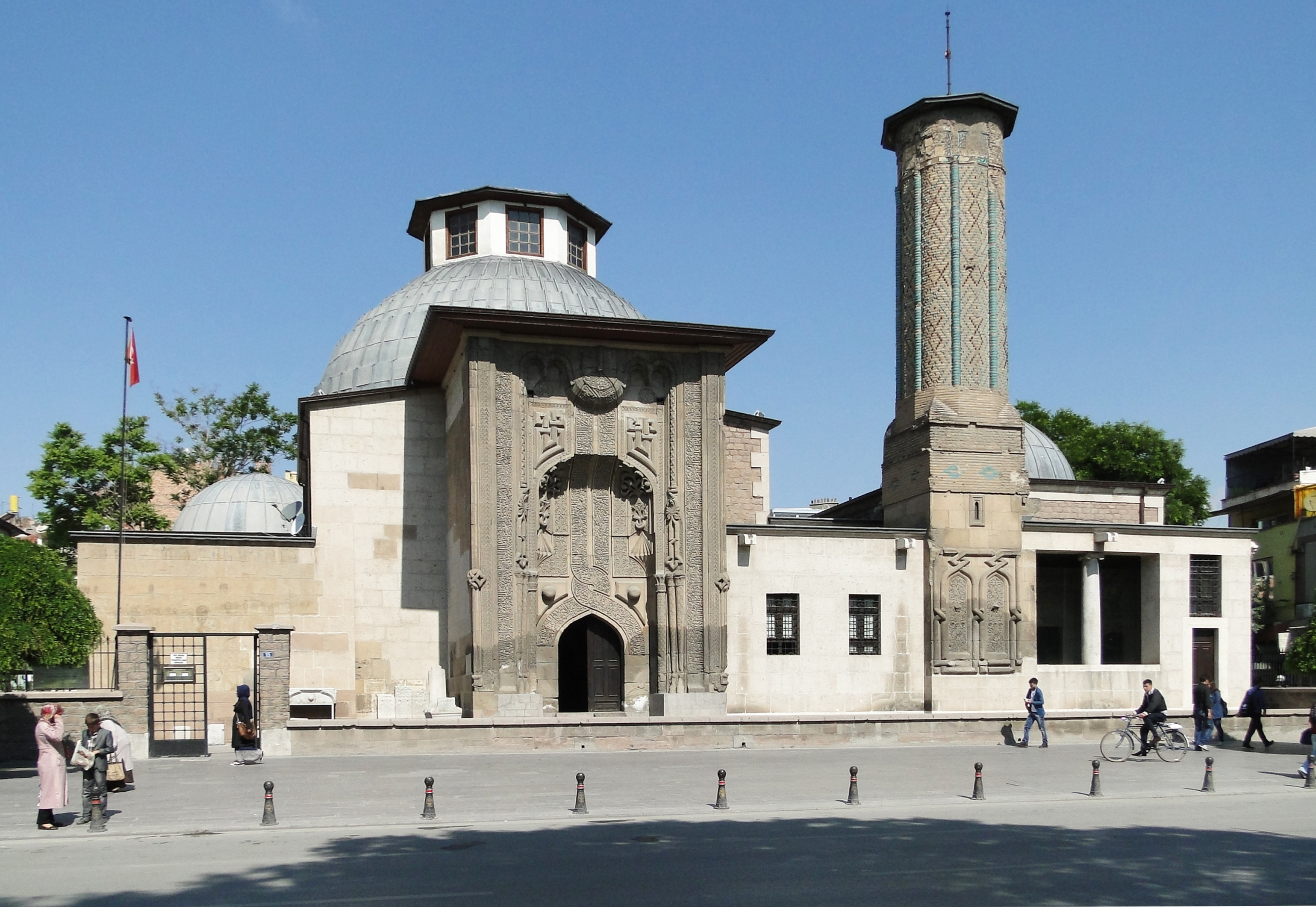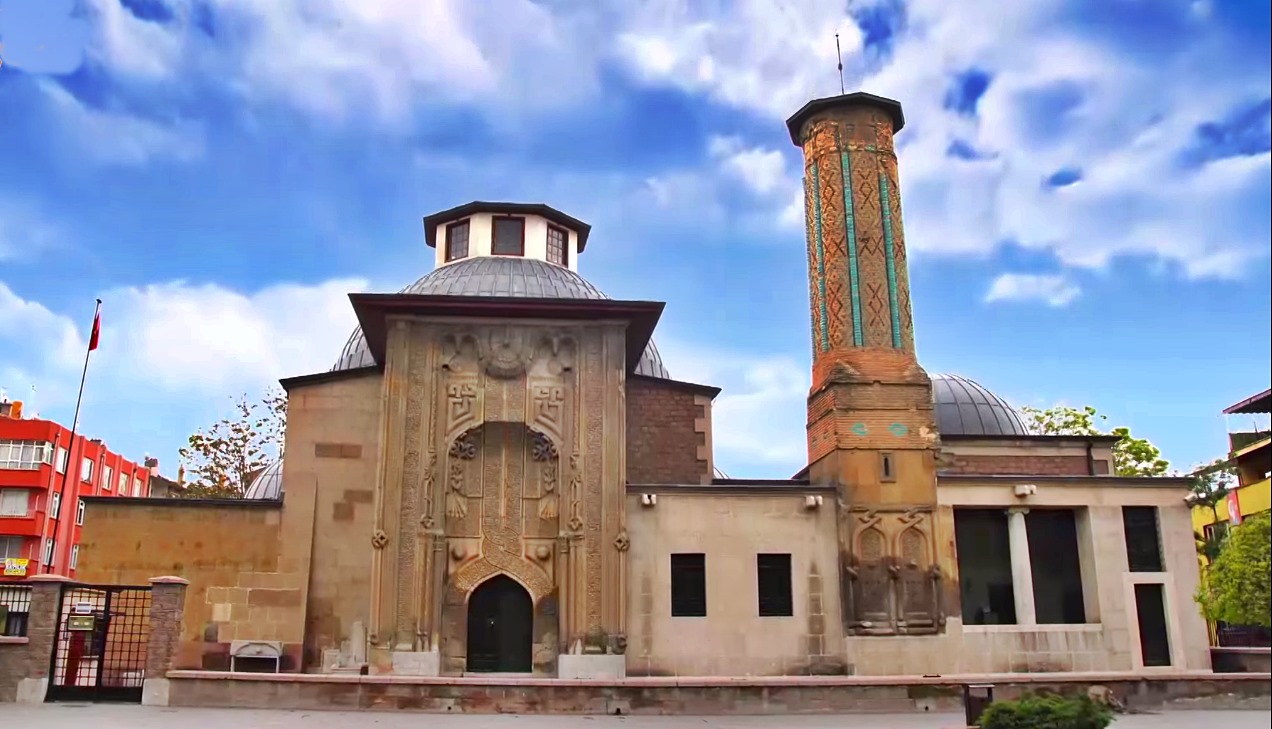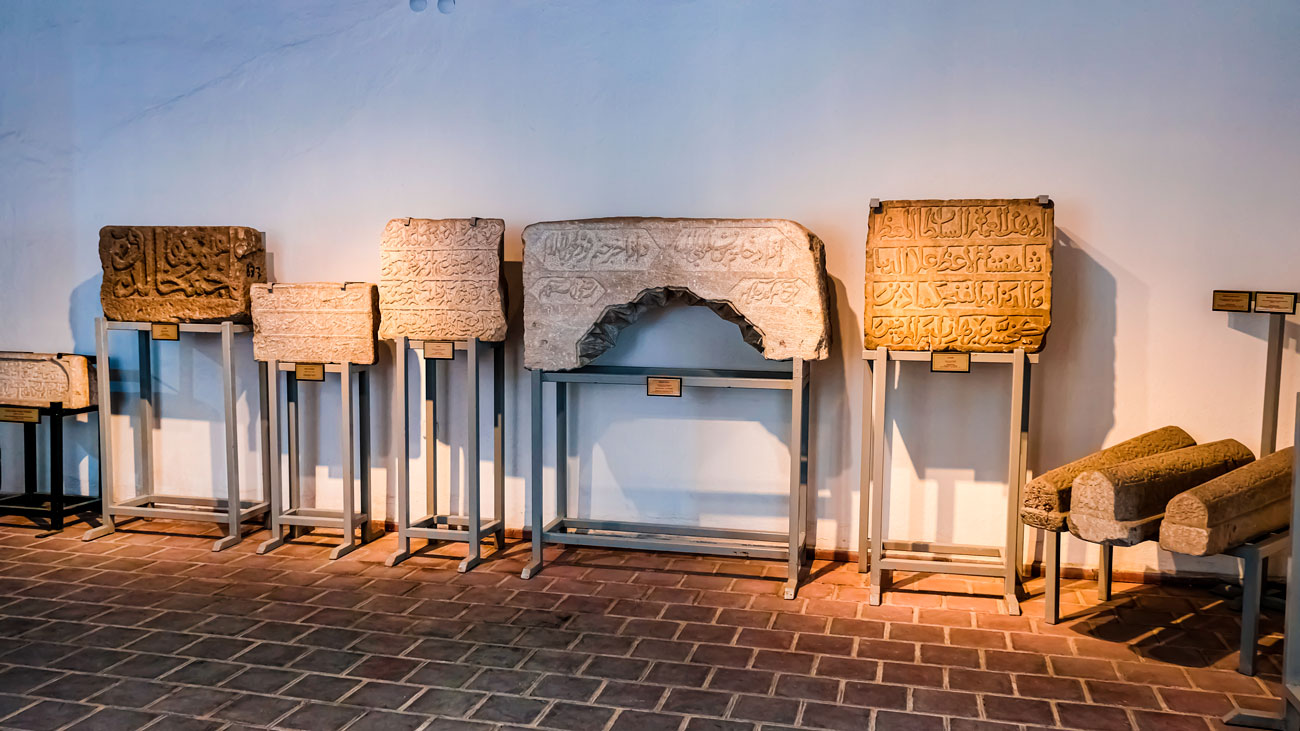Would you like to travel back in time in Konya and step into the world of Seljuk sultans and viziers? Imagine a place where stone is carved like lace in the hands of a master, where turquoise tiles compete with the sky, and where nearly 800-year-old secrets are whispered within its walls. As you get lost among the historical riches of Konya, I can almost hear you asking, What should I absolutely see? One of the most elegant answers to this question awaits you right across from Alaaddin Hill. In this article, we have prepared a list of things to do at the Ince Minareli Medrese, which will be one of the most unforgettable stops on your Konya trip. This is not just a museum, but living proof of Seljuk aesthetics and intellect. Let's step through the gate of this stone and wood masterpiece together and see what awaits you: a breathtaking portal, a melancholic minaret, and a museum that holds priceless treasures within.
Discover the Details on the Monumental Portal, the Pinnacle of Seljuk Stonework
As you walk towards the madrasa, you will notice a massive structure that draws you in even from a distance: the Portal (Taç Kapı). Don't mistake this for an ordinary entrance gate. In Seljuk architecture, portals are monuments that narrate the identity, power, and purpose of the structure. The portal of the İnce Minareli Medrese does exactly that; it boldly protrudes from the main walls of the building, declaring, I am here, and I have a story to tell.
When you stand before this portal and lift your head, you will find yourself in the midst of a stone symphony. Focus your eyes, because a different detail is hidden in every square centimeter. The interlocking geometric patterns, with no clear beginning or end, are an expression of the Seljuk desire to reflect the infinity of the universe and the divine order. The floral motifs, curved branches, and leaves that sprout from within this rigid geometry add life and a breeze from paradise to the stone.
Among the details, one of the most striking is undoubtedly the inscription bands created by master calligraphers. These lines, crafted in the elegant Seljuk thuluth script, contain the Yasin and Fetih surahs from the Holy Quran. The fact that the Yasin surah is known as the heart of the Quran and the Fetih surah means Victory not only adds religious depth to this portal but also sends a powerful message. The mid-13th century, when the structure was built, was a turbulent period when the Anatolian Seljuks were under Mongol pressure. The inscription of the Victory surah on the portal of this madrasa, commissioned by the powerful vizier Sahip Ata Fahrettin Ali, was actually a cultural and faith manifesto against political hardships. This portal was the embodiment of the resilient Seljuk spirit, carved in stone.
Now, let me tell you a little secret. As you examine the portal, look closely at the small rosettes just above the entrance arch. There, you will see the signature of the architect who created this immortal work: Amel-i Kelûk bin Abdullah, meaning The work of Keluk, son of Abdullah. This small signature personalizes a 750-year-old work of art and introduces us to the genius of that great master.

See the Remains of the Elegant Minaret with Turquoise Tiles That Gives the Madrasa Its Name
Right next to the magnificent stone portal of the madrasa, a more delicate structure of a different character rises: the famous slender minaret that gives the building its name. However, the story of this minaret is a bit sad. Originally, it was a much taller tower with two balconies, stretching gracefully towards the sky. But on an unfortunate day in 1901, a lightning strike took away the upper part of the minaret and one of its balconies. What we see today is the remnant of that glorious tower.
Don't let this story sadden you, because what remains is enough to show the sophistication of Seljuk art. Take a look at the brick-woven body that begins after the cut-stone base of the minaret. The color of the glazed bricks and tiles used on the octagonal body will mesmerize you. Have you ever wondered why that unique blue is called turquoise? The word entered European languages as Turkish stone or Turkish blue when they first saw this color on Turkish lands. So, you are currently looking at the very homeland of that color.
Stop here and think for a moment. Two structures standing side by side: one is a massive, carved stone portal symbolizing power and authority. The other is a light, elegant brick minaret carrying the color of the sky. This is no coincidence. Seljuk architects knew the language of materials very well. The heavy and durable stone represented the unshakable power of the state on earth (devlet), while the light, colorful, and skyward-reaching brick minaret symbolized the spiritual ascent of faith and the soul (din). So, you are actually standing at the intersection of the perfect balance between worldly power and divine faith, a tangible expression of the Seljuk worldview.

Explore the Seljuk and Ottoman Period Stone and Wood Artifacts Inside the Museum
After the splendor of the Portal and the elegance of the minaret, a completely different atmosphere greets you as you step inside. The monumentality of the exterior gives way to the calm and peaceful environment of the covered courtyard. This was once a center of learning where the science of hadith was taught, and students studied in its courtyard. When you look up, you will admire the brickwork of the large central dome and the Kufic script inscription of El−Mu¨lku¨−Lillah (Sovereignty belongs to God) adorning its edges. The small chambers around the courtyard were once student cells.
Today, this madrasa serves a very important function as the Museum of Stone and Wood Artifacts. Among the most remarkable works exhibited in the museum are the reliefs salvaged from the now-nonexistent city walls that once surrounded Konya. These artifacts are, in fact, the last witnesses of a lost city. The museum has become a sanctuary for these architectural orphans and has carried the spirit of the Seljuk capital to the present day.
Two symbols, in particular, stand out among these works:
The Double-Headed Eagle: The most famous symbol of the Seljuks, this majestic figure is not just a bird. Its heads looking simultaneously to the East and West represent the state's dominion, power, and protection in all directions. These eagles were once talismanic guardians on the walls of Konya Castle, protecting the city from evil.
Winged Angel Figures: These reliefs symbolize protectors from heaven, divine presence, and good fortune. These figures, frequently seen in Seljuk art, placed structures and cities under spiritual protection.
As you wander through the museum, don't forget to look at the other treasures from the Seljuk and Ottoman periods. Incredibly finely crafted wooden door and window wings, elegant tombstones and sarcophagi inscribed on marble, and epigraphs brought from different structures... Each one showcases the artistic understanding and craftsmanship of its era.
If the stone and wood examples of Seljuk art in this museum have fascinated you, you should definitely also see its neighbor, the Karatay Madrasa (Tile Works Museum), considered the pinnacle of tile art. After these historical treasures in the center of Konya, you can add a different dimension to your trip by visiting the Time Muzeum, which is unique in Turkey and located in Sille, an old Greek village just outside the city.

While You're Here: Complete Konya's Seljuk Triangle
We know that after leaving the İnce Minareli Medrese, you'll be satisfied with your dose of Seljuk history but will want more. You're in luck, as a Seljuk Triangle that you can explore on foot awaits you in the heart of Konya.
Alaeddin Hill and Mosque: Climb the hill right in front of you to enjoy a panoramic view of the city and take a break in the courtyard of one of Anatolia's oldest mosques.
Karatay Medrese (Tile Works Museum): After the magic of stonework, now dive into the dazzling world of Seljuk tile art. Karatay, the neighbor of İnce Minareli, is waiting for you.
Mevlana Museum: A trip to Konya would not be complete without visiting the Mevlana Museum, the spiritual heart of the city. You can easily reach it with a pleasant walk down Alaaddin Boulevard.
Frequently Asked Questions (FAQ)
Question 1: How much is the entrance fee for İnce Minareli Medrese (Museum of Stone and Wood Artifacts), and is the Müzekart valid?Answer: Entrance fees may vary by season and year. It is best to check the official website of the T.R. Ministry of Culture and Tourism before you go for the most up-to-date information. However, yes, the Müzekart is valid at the museum, and you can enter for free if you have one.
Question 2: What are the museum's visiting hours? Is it open on weekends?Answer: The museum is open to visitors every day of the week. Visiting hours differ for the summer and winter periods. Generally, it is open from 09:00 to 19:00 during the summer period (April 1 - October 31) and from 09:00 to 17:00 during the winter period (October 31 - April 1). However, as hours may change due to special occasions or maintenance, we recommend confirming from official sources before planning your visit.
Question 3: How do I get to İnce Minareli Medrese? Where is it located?Answer: The madrasa is located in the very heart of Konya, right across from Alaaddin Hill, on Alaaddin Boulevard. You can easily reach it on foot from most places in the city center. If you use the tram, you just need to get off at the Alaaddin stop.
Source: For more official information and current announcements about the İnce Minareli Medrese, you can visit the T.R. Ministry of Culture and Tourism's page at (https://turkishmuseums.com/museum/detail/2133-konya-tas-ve-ahsap-eserleri-muzesi-ince-minare/2133/1).


 English
English Türkçe
Türkçe